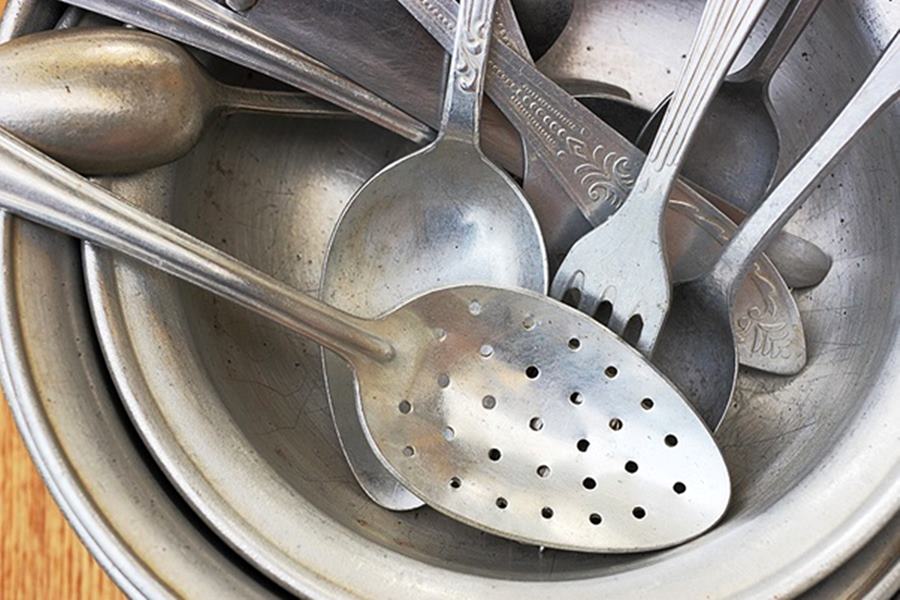Thu 26 November 2020:
Aluminum – the material that severely transformed the world around us by solving many problems, from structural engineering to spaceflight or food packaging. Nowadays, we take aluminum for granted, because it has a broad range of applications in almost all parts of our everyday life, from healthcare to transportation.
Yet, the history of aluminum is much more complicated and interesting. Did you know that in the time of Napoleon III aluminum was regarded as a precious metal, valued even more than gold? It was due to the fact that the process of extracting pure metal from naturally occurring compounds was difficult and expensive.
Although aluminum has been used since ancient times in the forms of salts and oxides, it was only obtained as a pure metal in 1825 by Danish physicist and chemist Hans Ørsted. This achievement revolutionized the industry and affected our daily lives.
Al like Aluminum
Aluminum is a chemical element marked with the symbol Al. It is a silver-white, soft, and ductile metal with low density and excellent corrosion resistance. Due to the combination of these properties, it has found a wide variety of applications in various fields including the building industry, automotive, and aviation engineering.
But did you know that this metal has somehow found its way into our daily diets? It can be found almost everywhere as it occurs naturally in the environment, food, and even drinking water. You may find it in drugs as an antacid agent and in processed food (aluminum is sourced from food packaging, aluminum foils, or baking trays).
Unfortunately, this is not the end. Recently, aluminum was found use as an additive in cosmetics like antiperspirants, concealers, eye-shadows, blushes, foundations, sun creams, mattifying powders, and even toothpaste. For quite a long time aluminum was suspected to have cancerogenic effects, yet recent studies appear to contradict this. However, is this metal safe? An answer is: no, it causes several disorders [1, 2], So, let’s take a closer look at this issue.
Where is aluminum found?
Aluminum is the third most common element on Earth. It is also the first most abundant metal on our planet, thus we expect aluminum to be found in different forms. However, due to its high reactivity, it usually occurs in chemical compounds. It is extremely difficult to find this material in nature as a pure metal. Aluminum in the form as most of us know it (i.e. foil) is obtained within industrial processes from minerals or compounds.
The reality proves us so – in nature, aluminum is widely spread among minerals. As a hydroxide, it appears in the mineral called bauxite. It is commonly used on an industrial scale. What’s more, aluminum naturally occurs in many different gemstones, such as ruby, sapphire, or corundum. Did you know that corundum powder is used to polish surfaces?
Aluminum is also the second most used metal in the technology industry due to its high resistivity against corrosion and because it is very light. Looking around we may find it almost anywhere: in aircraft, bikes, cellphones, in the kitchen as a can or a food foil, in medicine as an antacid, or even in bathrooms as an antiperspirant ingredient. This metal is also well-known in the textile industry for its amphoteric properties – it is used as a dye mordant, which binds dyes in a textile material together.
On the less pleasant side, mishandling aluminum can cause significant pollution problems, which is the consequence of such wide usage. A recent study found that air pollution near aluminum foundries can be even three times higher than normally [3]. On the other hand, another study proved that the use of uncoated aluminum trays in the kitchen could exceed the specific release limit of the element by up to six times [4]. It is used as an anticaking agent in table salt, an emulsifying agent in processed cheese, a leavening agent in cereal foods, dried fruits, and flour, and even as a stabilizer and firming agent in the bakery and many other fields of the food industry [5].
From these two studies, and the overall characteristics of the element a question arises – do we intake harmless amounts of aluminum? Or does it silently do as harm? In summary, it is essential to know whether the light metal, that is so commonly used, is safe for us.
How does aluminum interact with our organism?
Aluminum is a heavy metal that is not necessary for our organism to survive. As a compound – aluminum chlorohydrate is widely added to antiperspirants against sweating and it is easily absorbed by the skin. Unfortunately, it can enter our body through inhalation, ingestion, and even blood [6,7]. What’s concerning is that recent studies show the relation between aluminum with many brain diseases including Parkinson’s disease, Alzheimer’s disease, and multiple sclerosis [8,9]. Its excess in the body also causes bone diseases and induces microcytic anemia [10].
Therefore, as it is known that its absorption is enhanced by some acidic substances, e.g. citric acid found in lemons, cooking dishes in the presence of acidic products like lemon/vinegar should be avoided when preparing aluminum-rich food or while using aluminum foil or cookware, to prevent unnecessarily high intake.
Should we be concerned about aluminum?
The prospect of higher aluminum intake possibly resulting in such diseases as above mentioned may be worrying. However, we should bear in mind that aluminum is common in food and most importantly that it mainly passes through our digestive systems with little of it entering the bloodstream. A minimum of caution is recommended in the kitchen, with regards to mixing aluminum in food or utensils with acidic products, however unreasonable amounts of fear are unnecessary. For sure it is better to avoid products that contain it.
Only people with pre-existing conditions such as diminished kidney function (which does not allow to egest aluminum as efficiently) should try to minimize aluminum intake as much as possible.
What about the environment?
Aluminum in high concentration is regarded as a toxic element also to aquatic gill-breathing organisms living in the slightly acidic freshwater. Then, getting inside their organisms affects plasma and hemolymph causing osmoregulatory failure [11]. Moreover, aluminum likely bioaccumulates in invertebrates existing in freshwater as well as in plants. The same happens when aluminum gets to the acidic soil it easily binds roots and affects plant growth.

Did you know that aluminum constructions like the fence are placed in concrete corrodes? When that metal is in contact with concrete (pH~13, so it is highly alkalic) and water (rain, humidity) it undergoes a chemical reaction and easily accumulates in the soil, and the rain causes the spreading of this element all around. Is it good or bad? The answer is bad. It is soaked with the plants, so fruits and vegetables for sure have it when the garden is surrounded by the aluminum fence.
Summary
Aluminum is not essential for organisms to live, they do not even really need it. It affects animals and plants as well and can lead to serious health problems. It is easily absorbed by tissues when it is in touch with an acid like acid in our tummy, acidic soil, and water. So, it is better to avoid it, however, this metal revolutionized the industry. Due to its light mass and feasibility to modify the shape it is used in many fields from transportation to space applications. Thanks to that aircraft can cross long distances and the building constructions are lighter than ever before which made our lives easier.
This article is a joint work of Adrian Romaniuk (Faculty of Chemistry, University of Warsaw), Luca Nowosielski (Department of Chemistry, Imperial College London), Magdalena Warczak (Institute of Physical Chemistry, Polish Academy of Sciences), Agnieszka Pregowska (Institute of Fundamental Technology Research, Polish Academy of Sciences), and Magdalena Osial (Faculty of Chemistry, University of Warsaw) as a Science Embassy project.
Article originally Published in Technology.org CLICK HERE
FOLLOW INDEPENDENT PRESS:
TWITTER (CLICK HERE)
https://twitter.com/IpIndependent
FACEBOOK (CLICK HERE)
https://web.facebook.com/ipindependent
Think your friends would be interested? Share this story!




















